Hubble 'hidden gems': ESA releases 12 lesser-known images captured by the telescope during its 30 years in space
This image show the galaxy NGC 3256 which was formed as a result of a galactic collision in its distant past, giving it the unusual shape it is known to have today
A commemorative calendar has been published by the European Space Agency showcasing 12 lesser-known images captured by the Hubble Space Telescope, marking 30 years since its launch.
The spectacular selection of images show galactic mergers, dying stars and diamond like clusters - all taken by the telescope over 30 years. They've been dubbed 'hidden gems' by ESA.
The telescope, named after American astronomer Edwin Hubble, was launched in April 1990 as a joint NASA and ESA mission.
In its three decades of operation it has helped pin down the age of the universe, understand seasons on other planets and improve out understanding of planets outside of the Solar System.
Here are the images:
January: Hubble’s colourful view of the Universe
This incredible image of bright lights and colourful swirls was captured by the Hubble Space Telescope in 2014.
The image is actually a picture of about 10,000 galaxies.
'It is the most comprehensive picture ever assembled of the evolving Universe — and one of the most colourful' ESA said.
- The Hubble Space Telescope was first launched in 1990 as a joint mission between NASA and ESA
- It has observed over 43,500 celestial bodies since it first launched
- The European Space Agency selected 30 images for a shortlist that the public voted on to create the final 12
- The telescope was launched into space on April 24, 1990 by NASA

This stunning image showing thousands of galaxies was taken on June 3, 2014 by the Hubble Space Telescope. It is one of the most colourful images taken by the scientific instrument
February: Revisiting the Veil Nebula
This colourful image captured by Hubble in 2015 shows a small section of the Veil Nebula.
This section of the outer shell of the famous supernova remnant is in a region known as NGC 6960 or — more colloquially — the Witch’s Broom Nebula.
Located roughly 2,100 light-years from Earth, this bright cloud of glowing debris spans approximately 110 light-years.
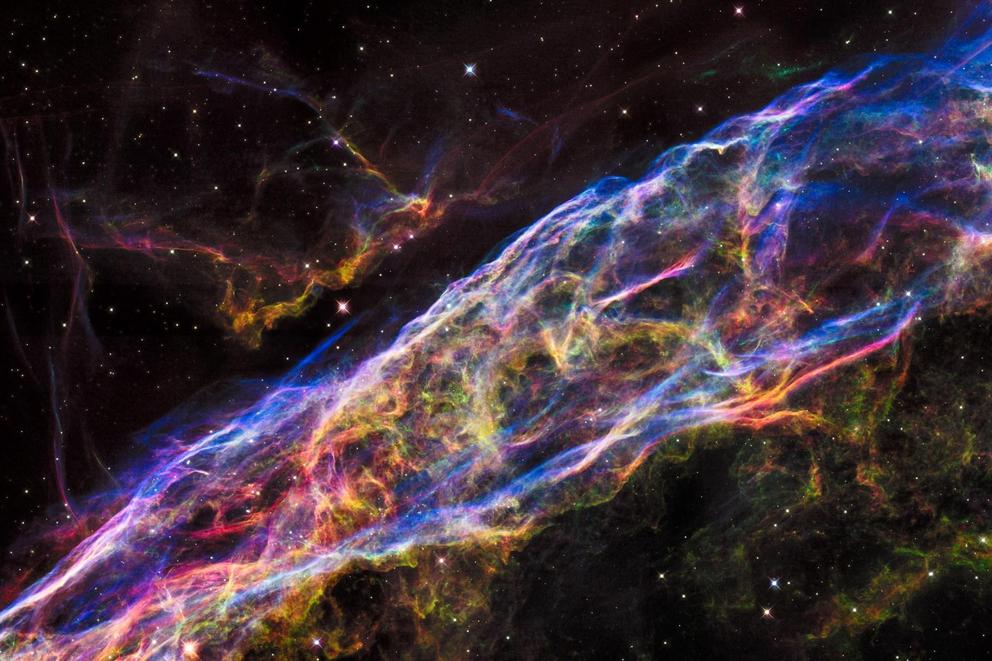
This captivating image of the Veil Nebula, which is 110 light years across, was taken in 2015 by the Hubble Space Telescope. It is a section of the outer shell of hte famous supernova remnant in the 'Witch's Broom' nebula
March: Violent birth announcement from an infant star
This image of IRAS 14568-6304 features a young star that is cloaked in a haze of golden gas and dust.
The photo was released in 2014 and shows the dark region known as the Circinus molecular cloud.
It is 2,500 light years away and about 250,000 times the mass of our Sun.
'It is providing us with valuable clues about the process of star formation', ESA said.
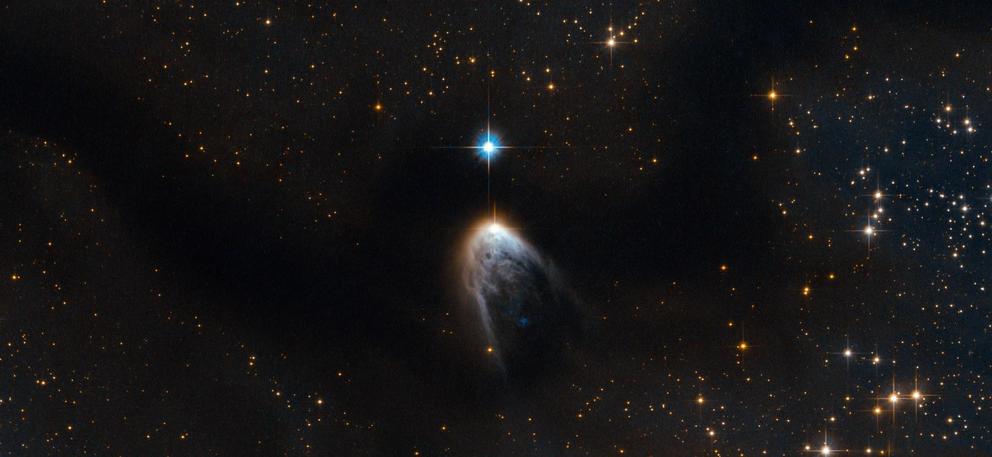
This stunning image showing a plume of dust and gas beneath a blue star is 'providing us with valuable clues about the process of star formation', ESA said
The calendar is part of a series of initiatives by the European Space Agency to celebrate the success of the Hubble Space Telescope ahead of its 30th anniversary in April.
The agency says it has been instrumental in multiple scientific discoveries, engineering accomplishments and cultural impacts and so they wanted to find a selection of images that were stunning but not as well known.
April: Dazzling diamonds of Trumpler 14
One of the largest gatherings of hot, massive and bright stars in the Milky Way is the star cluster Trumpler 14.
A 2016 Hubble image captured the cluster, which houses some of the most luminous stars in our galaxy - shining like 'diamonds'.
The prominent dark patch, close to the centre of the cluster is a 'Bok globule', according to ESA. This is an isolated and relatively small dark nebula, containing dense dust and gas.
'These objects are still subjects of intense research as their structure and density remains somewhat a mystery.'
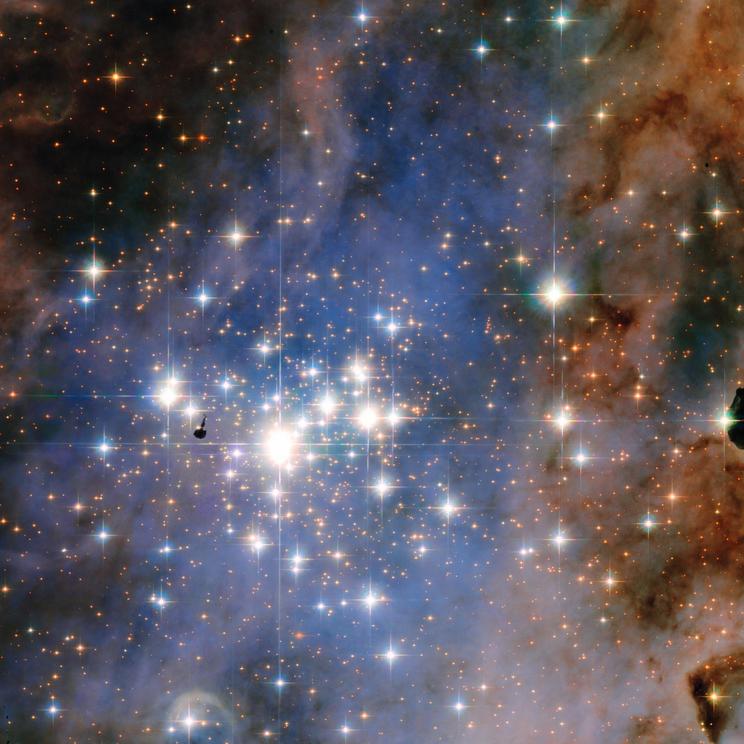
The diamond like bright stars of the Trumpler 14 cluster include some of the brightest objects in the Milky Way. This is 8,000 light years from Earth
May: A perfect spiral with an explosive secret
In 2011 Hubble took this snapshot showing the fine details and 'exceptionally perfect' spiral structure of the galaxy NGC 634.
It is located 250 million light years away in the constellation of Triangulum.
NGC 634 was host to a rare white dwarf supernova, spotted in 2008, that was as bright as the whole of its home galaxy.
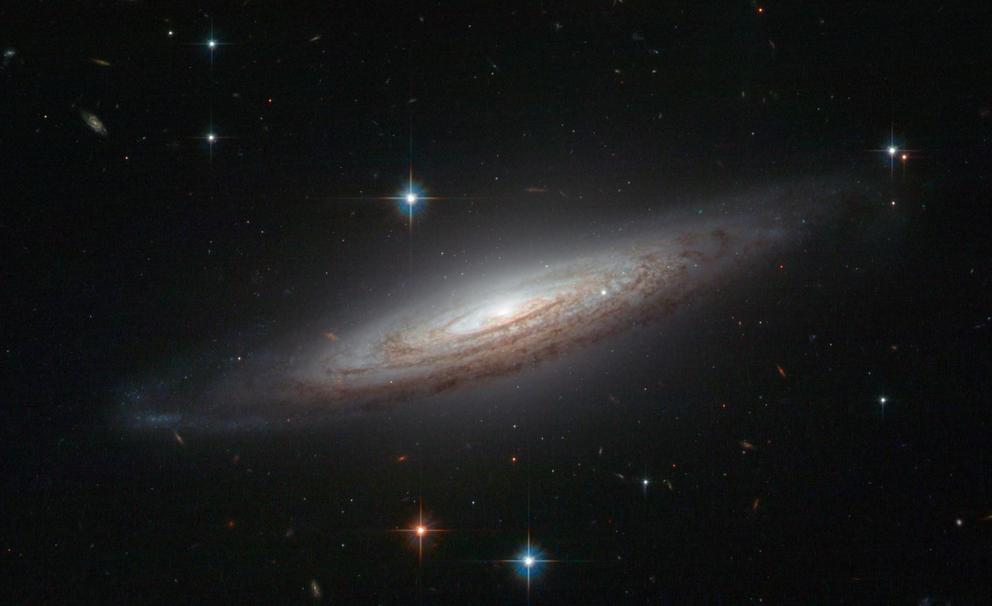
In 2008 a bright flash was spotted from this stunning spiral galaxy that almost equaled the light of the galaxy itself. It was a white dwarf star going supernova
June: Hubble view of star-forming region S106
This composite image from 2011 shows a compact star forming region in the constellation of Cygnus - the Swan.
It combines two images taken in infrared light and one tuned to a specific wavelength of visible light emitted by excited hydrogen gas.
A newly-formed star called S106 IR is shrouded in dust at the centre of the image.
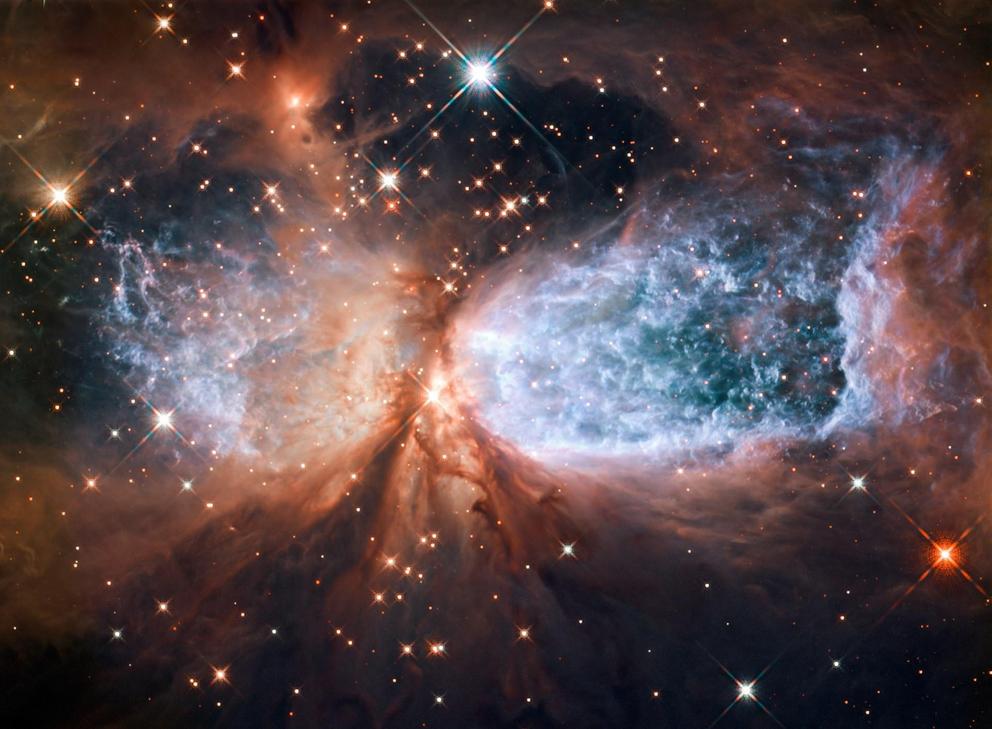
This small star forming region is given its hourglass shape by a newly-formed star at the centre of the image called S106 IR - it is shrouded in dust. The blue areas are light from glowing hydrogen
July: The moons of Saturn
This 2018 image of the ringed planet Saturn shows six of its 82 known moons.
You can see the bright spots that are Dione, Enceladus, Tethys, Janus, Epimetheus, and Mimas - they are all icy and cratered, according to the European Space Agency.
'Enceladus is considered a candidate for the existence of primitive life because it is outgassing water vapour from a subsurface ocean', the agency added.
Scientists hypothesise that a small, wayward moon like one of these disintegrated 200 million years ago to form Saturn’s ring system.
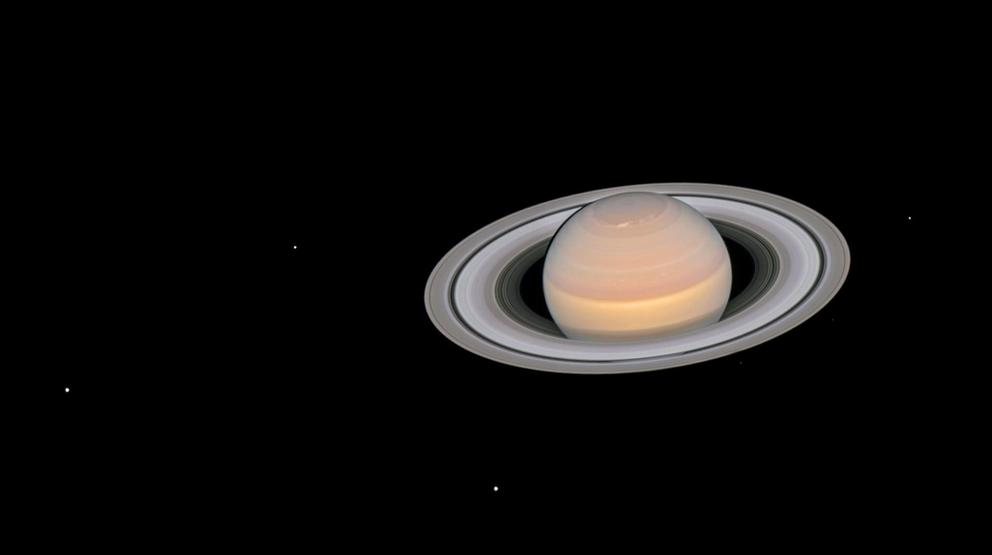
This is a 'composite' image of Saturn made up of multiple pictures and shows some of the gas giants many moons as white dots. From left to right, the moons visible in this image are Dione
August: Hubble snaps NGC 5189
This 2012 Hubble Space Telescope image of NGC 5189 unveiled new details of the object.
'The structure visible within NGC 5189 is particularly dramatic', ESA said.
The intricate structure of the stellar eruption looks like a giant and brightly coloured ribbon in space.
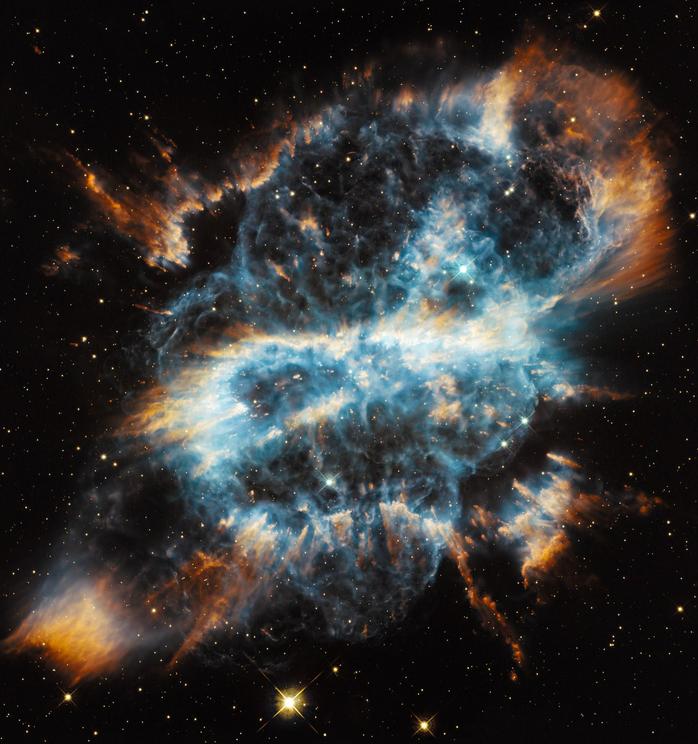
This image of the NGC5189 planetary nebula within the Milky Way was spotted in the Musca constellation in December 2012. The intricate structure of the stellar eruption looks like a giant and bright ribbon in space
During the 1970s, NASA and ESA began planning for a space telescope that could see beyond the blurring effects of the Earth's atmosphere and take clearer images of the Universe than ever before.
In 1990 the idea finally became a reality and, despite a flaw in the main mirror - which was corrected by astronauts on board the space shuttle Endeavour in 1993 - Hubble has 'far exceeded expectations', ESA says.
'It has delved deeper into the early years of the Universe than was ever thought possible, played a critical part in the discovery that the expansion of the Universe is accelerating and probed the atmospheres of planets around distant stars.'
The successor to Hubble is the James Webb Space Telescope, a NASA led project with support from ESA and the Canadian Space Agency - it's due to launch in 2021.
September: Scattered stars in Sagittarius
This colourful and star-studded view of the Milky Way was captured in 2016 when Hubble pointed its cameras towards the constellation of Sagittarius.
The blue stars visible at the front were likely all formed at the same time and from the same collapsing molecular cloud.
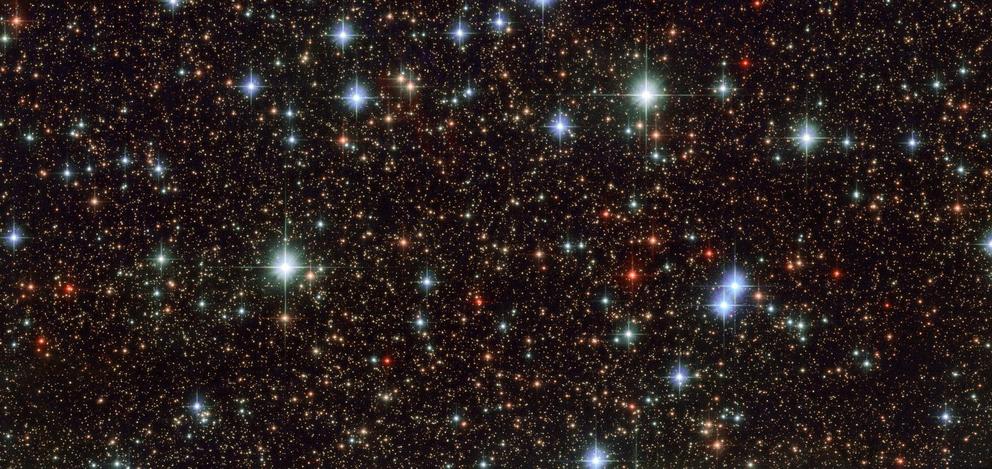
The bright blue stars at the front of this image are offset against dimmer red dwarf stars in the background. They are in the constellation of Sagittarius - The Archer
October: Hubble watches light echo from mysterious erupting star
This image, reminiscent of HAL 9000 from Arthur C. Clarke's Space Odyssey series is actually the stellar eruption of a 'moderately dim star' known as V838 Monocrerotis.
Captured in 2002, it shows the echoing of light through space caused by unusual stellar outbursts, according to ESA.
The image is made up of a combination of exposures taken through blue (B), green (V), and infrared (I) filters.
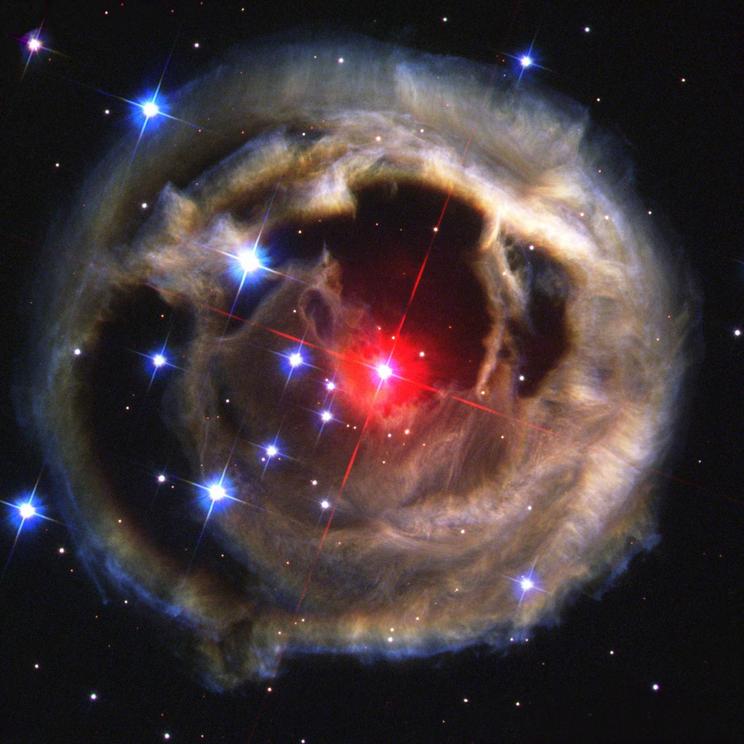
This image was taken in December 2002 showing a Red Supergiant in the Monoceros constellation - it was taken by Hubble's Advanced Camera for Surveys
The James Webb Space Telescope, launching next year, is named after former NASA administrator James Webb. NASA says it will be the primary space observatory 'for the next decade'.
The Hubble Space Telescope is expected to continue operating until at least June 2021, according to NASA, who decided to extend its life by five years in 2016.
For a period of time there could be overlap between the two telescopes with Webb expected to launch early in 2021.
November: Hubble snaps close-up of the Tarantula Nebula
In 2011, Hubble captured this stunning close-up shot of part of the Tarantula Nebula.
It is a star-forming region rich in ionised hydrogen gas, ESA said.
The nebula is in the Large Magellanic Cloud, a small galaxy which neighbours the Milky Way.
The nebula is home to many extreme conditions including supernova remnants and the heaviest star ever found.
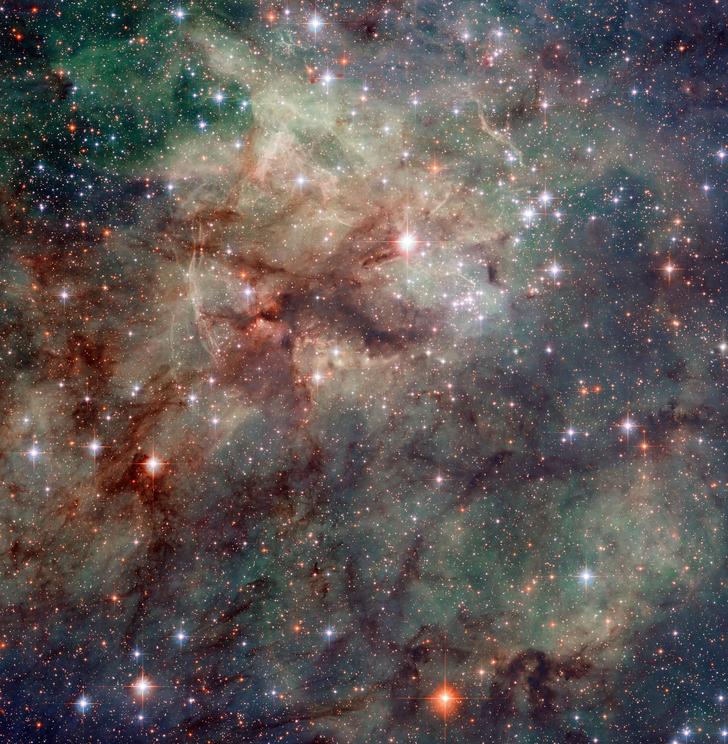
The Tarantula Nebula is the most luminous nebula of its type in the local Universe. This image is a close up of part of the star forming region of the Large Magellanic Cloud
Over the course of its 30 year mission Hubble has made more than 1.5 million observations of more than 43,500 celestial objects producing over 150 terabytes of data.
The telescope, which produces 80GB of data every month has led to the publication of more than 15,000 scientific papers and multiple significant discoveries including two new moons of Pluto called Nix and Hydra.
'This makes it one of the most productive scientific instruments ever built', says ESA.
December: IC beauty
This amazing image of the dying star IC 4406 was captured in 2002 and features a 'rainbow of colours'
Like many other planetary nebulae, IC 4406 exhibits a high degree of symmetry', according to ESA.
'The nebula's left and right halves are nearly mirror images of each other.'
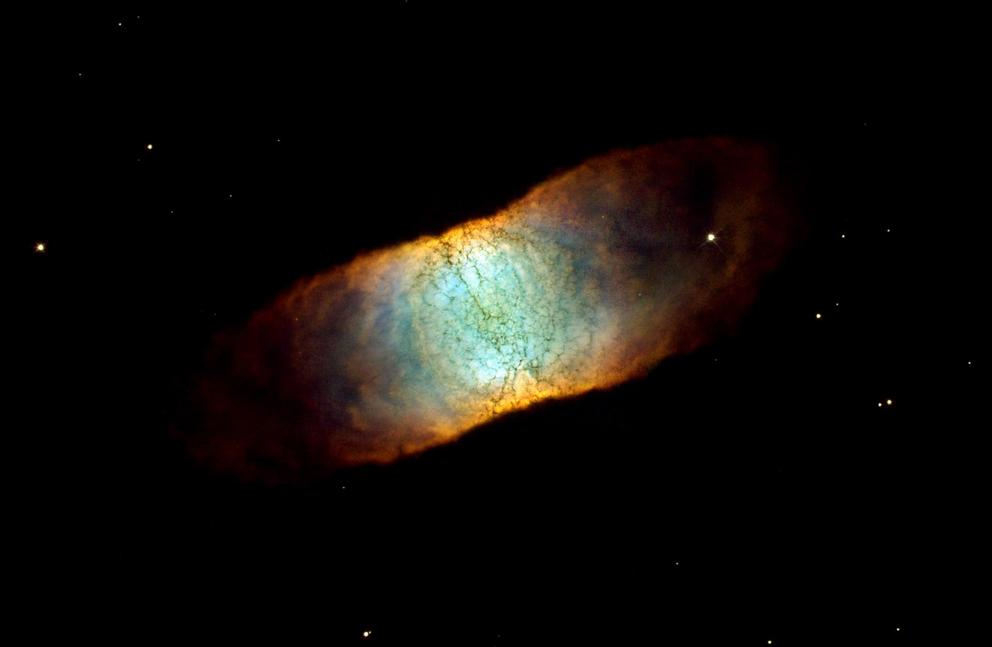
This rainbow like image shows the dying star IC 4406 - some 5,000 light years away in the Lupus constellation and like many planetary nebula it shows a high degree of symmetry, according to ESA
The most popular Hubble images of all time
As well as the incredible scientific discoveries the Hubble has helped bring about, the space telescope is probably most famous for its stunning selection of images including the pillars of creation, a rose made of galaxies and the Bubble Nebula.
The European Space Agency has a list of the top 100 images taken by the Hubble Space Telescope on its website.
The images in the top 100 list that have made newspaper front pages, been shared around the world by millions of people and encouraged generations of people to become scientists.
According to ESA the most popular Hubble image is called 'Westerlund 2' and was taken by the telescope on its 25th anniversary.
Here are a selection of image from the ESA Hubble Top 100
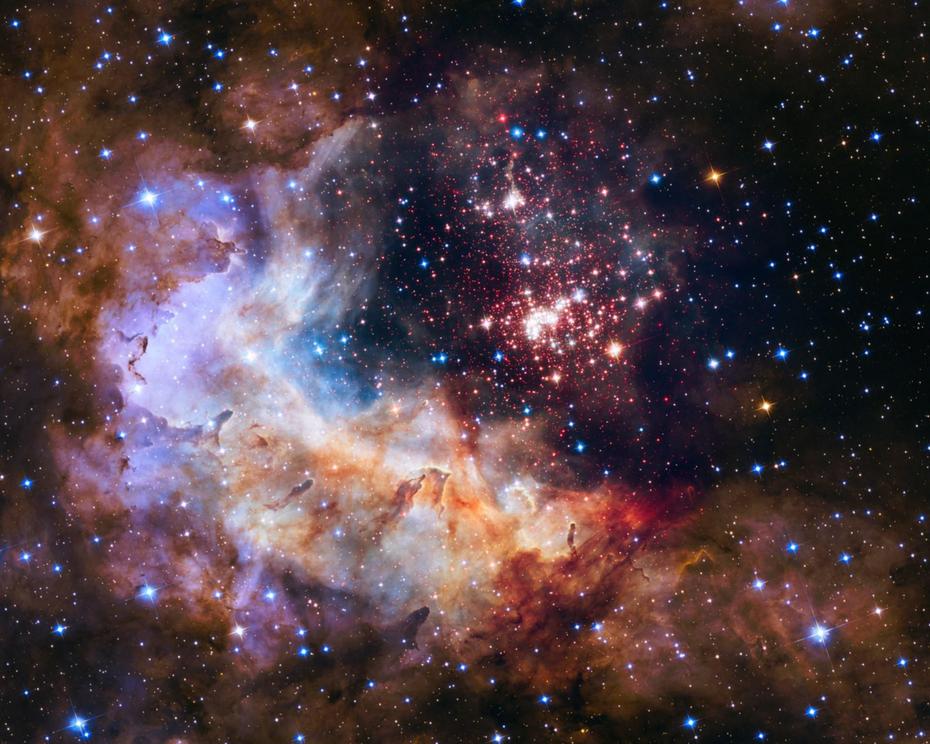
This amazing image shows the cluster Westerlund 2 and its surrounding areas. It was released to mark the 25th anniversary of the launch of Hubble. The image's central region contains star cluster
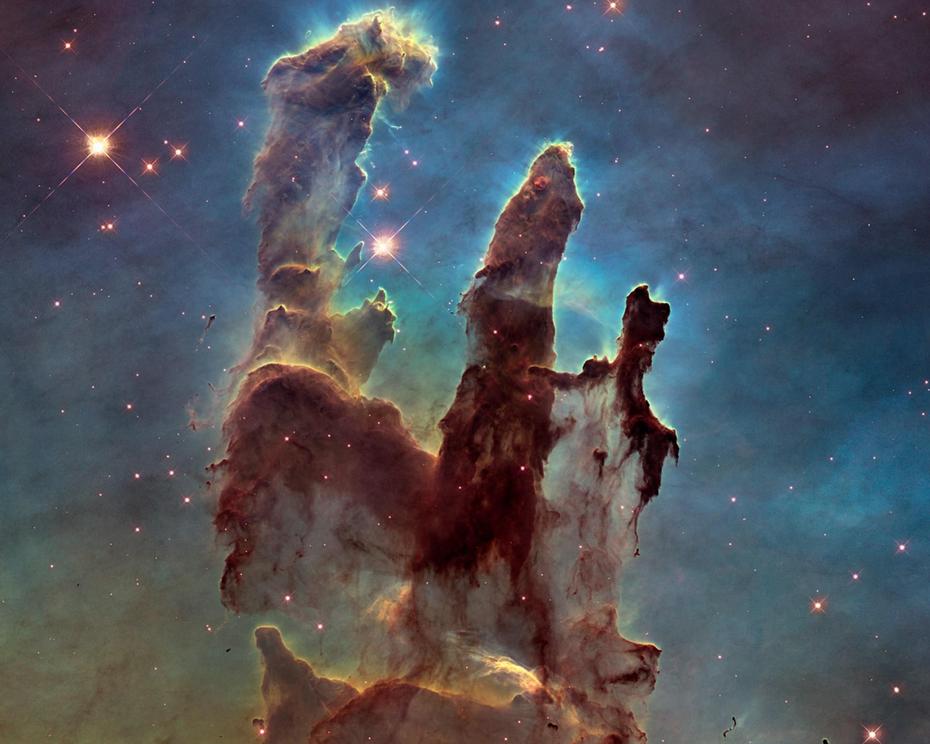
The Eagle Nebula's Pillars of Creation is one of the most iconic images captured by Hubble in its 30 year history. This image shows the pillars as seen in visible light, capturing the multi-coloured glow of gas clouds, wispy tendrils of dark cosmic dust, and the rust-coloured elephants' trunks of the nebula's famous pillars

This image of a pair of interacting galaxies called Arp 273 was released to celebrate the 21st anniversary of the launch of the Hubble Space Telescope. The distorted shape of the larger of the two galaxies shows signs of tidal interactions with the smaller of the two. It is thought that the smaller galaxy has actually passed through the larger one
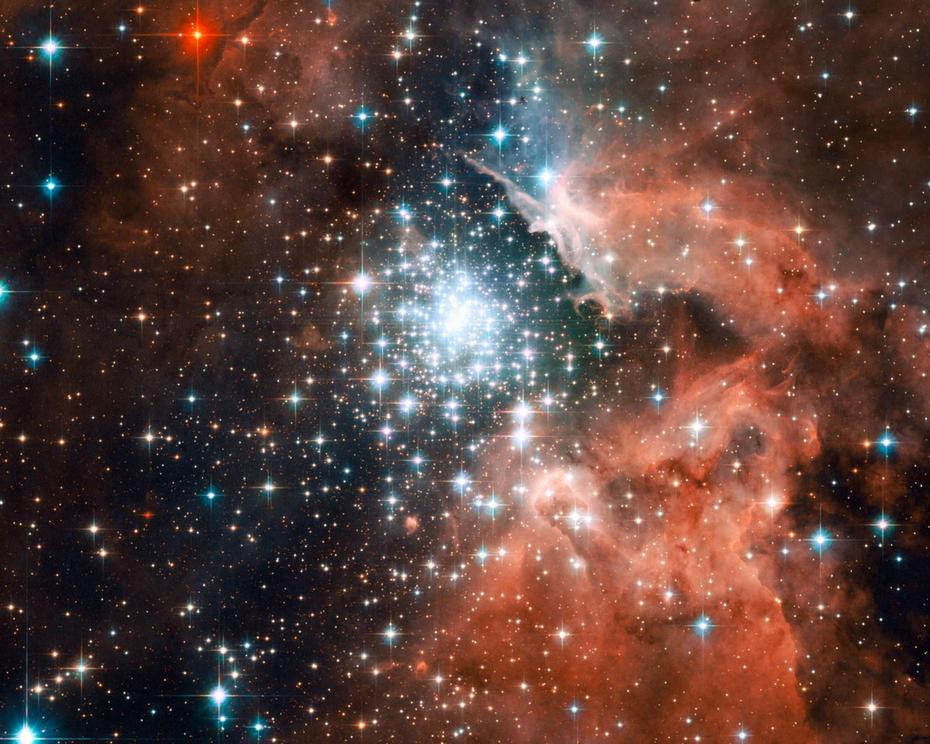
The star-forming region NGC 3603 - seen here in a Hubble Space Telescope image - contains one of the most impressive massive young star clusters in the Milky Way. Bathed in gas and dust the cluster formed in a huge rush of star formation thought to have occurred around a million years ago
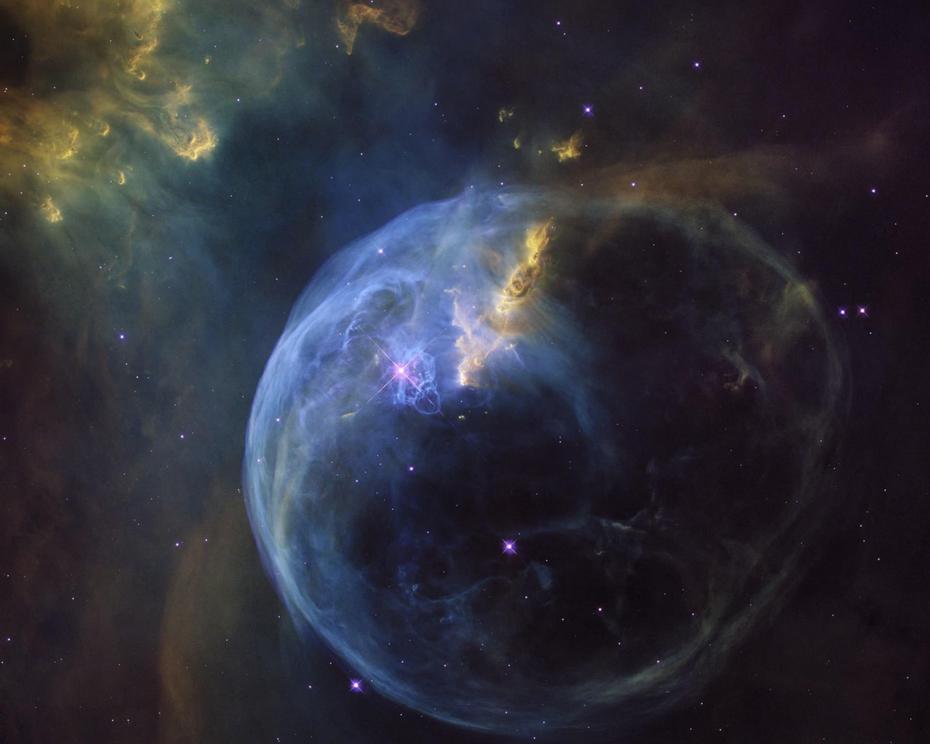
The Bubble Nebula, also known as NGC 7635, is an emission nebula located 8 000 light-years away. This stunning image was observed by the NASA/ESA Hubble Space Telescope to celebrate its 26th year in space
